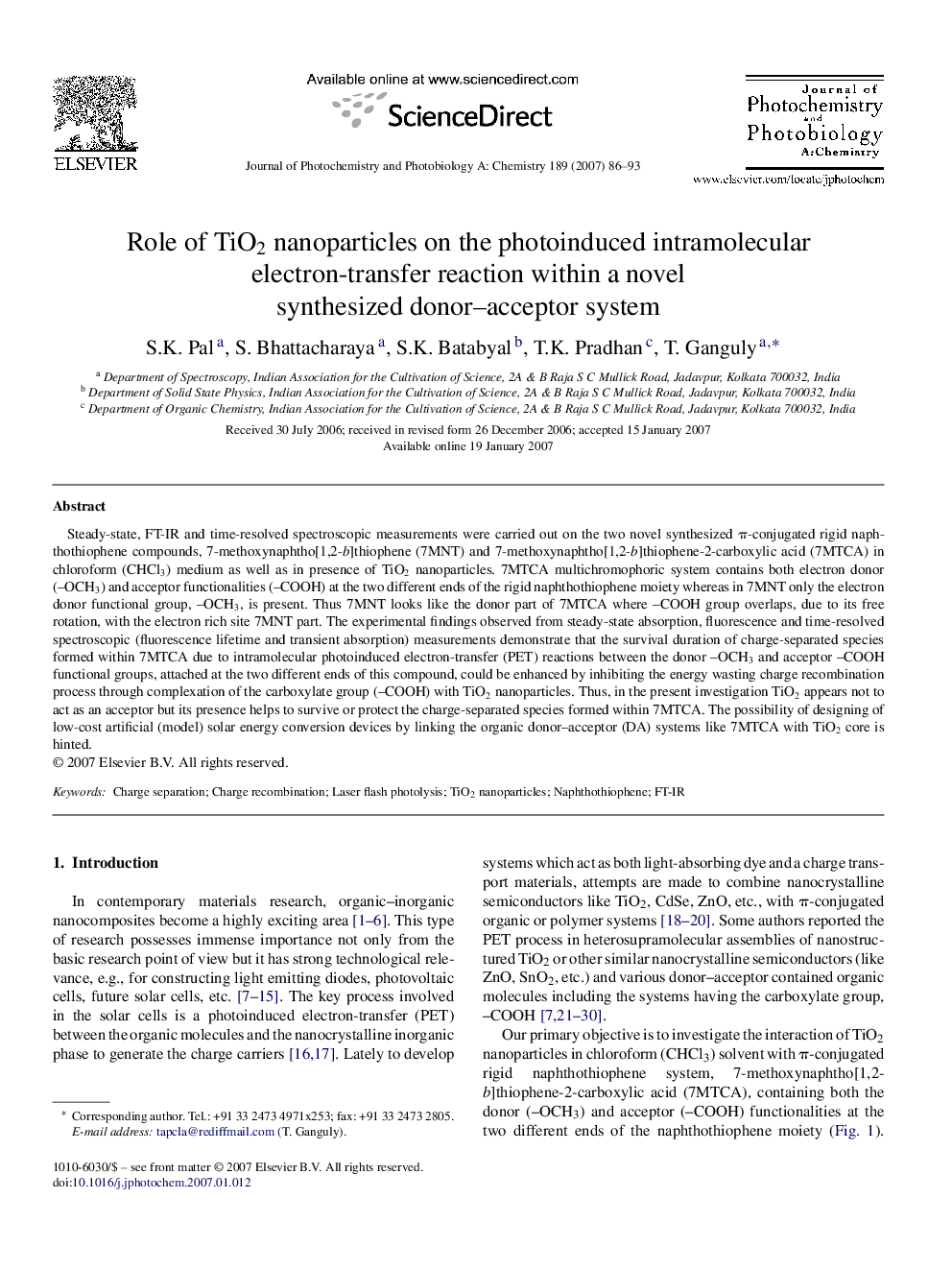| Article ID | Journal | Published Year | Pages | File Type |
|---|---|---|---|---|
| 29309 | Journal of Photochemistry and Photobiology A: Chemistry | 2007 | 8 Pages |
Steady-state, FT-IR and time-resolved spectroscopic measurements were carried out on the two novel synthesized π-conjugated rigid naphthothiophene compounds, 7-methoxynaphtho[1,2-b]thiophene (7MNT) and 7-methoxynaphtho[1,2-b]thiophene-2-carboxylic acid (7MTCA) in chloroform (CHCl3) medium as well as in presence of TiO2 nanoparticles. 7MTCA multichromophoric system contains both electron donor (–OCH3) and acceptor functionalities (–COOH) at the two different ends of the rigid naphthothiophene moiety whereas in 7MNT only the electron donor functional group, –OCH3, is present. Thus 7MNT looks like the donor part of 7MTCA where –COOH group overlaps, due to its free rotation, with the electron rich site 7MNT part. The experimental findings observed from steady-state absorption, fluorescence and time-resolved spectroscopic (fluorescence lifetime and transient absorption) measurements demonstrate that the survival duration of charge-separated species formed within 7MTCA due to intramolecular photoinduced electron-transfer (PET) reactions between the donor –OCH3 and acceptor –COOH functional groups, attached at the two different ends of this compound, could be enhanced by inhibiting the energy wasting charge recombination process through complexation of the carboxylate group (–COOH) with TiO2 nanoparticles. Thus, in the present investigation TiO2 appears not to act as an acceptor but its presence helps to survive or protect the charge-separated species formed within 7MTCA. The possibility of designing of low-cost artificial (model) solar energy conversion devices by linking the organic donor–acceptor (DA) systems like 7MTCA with TiO2 core is hinted.
